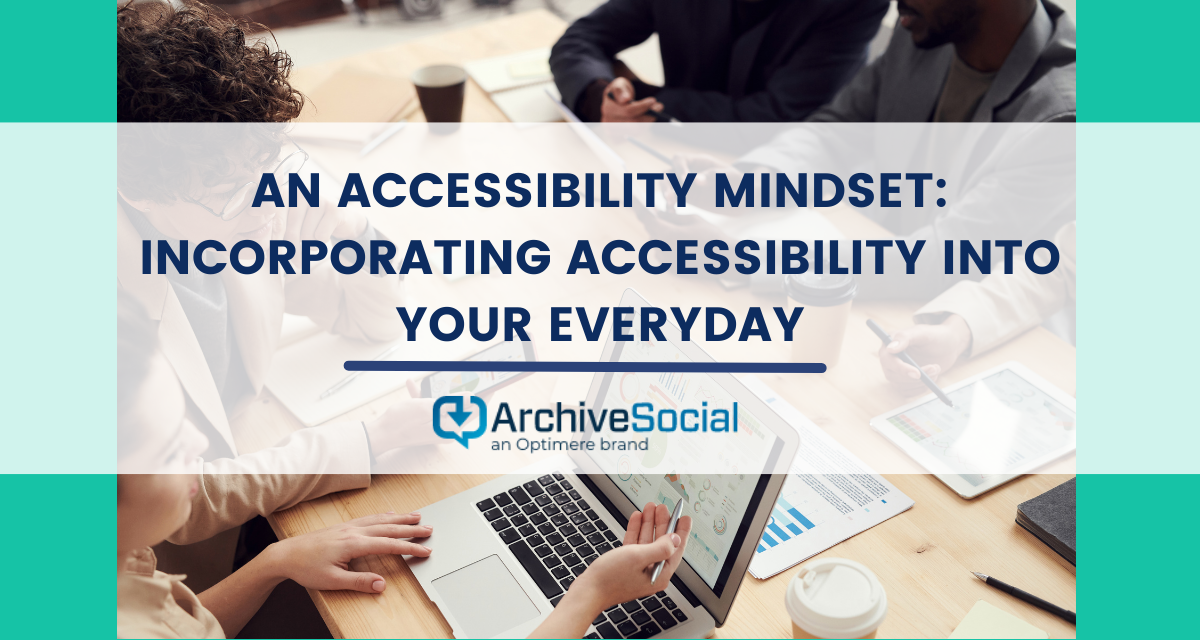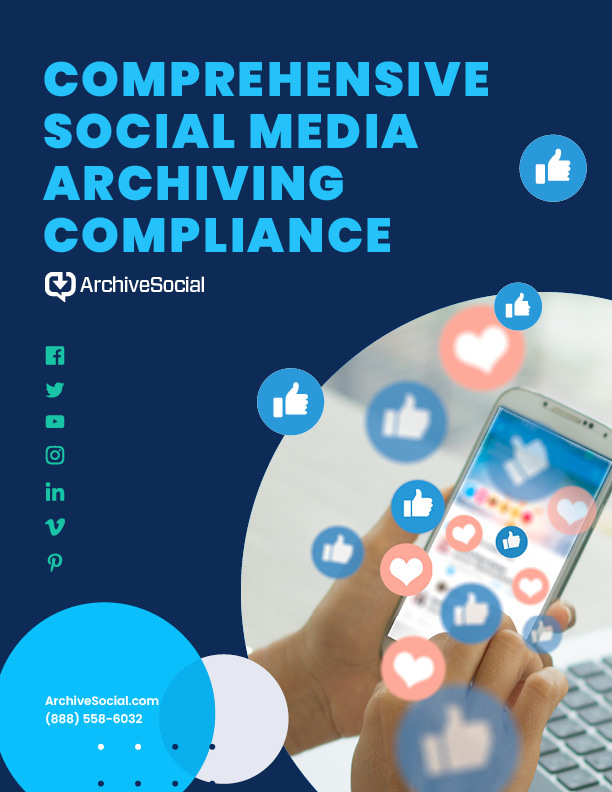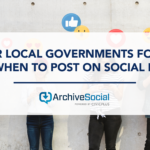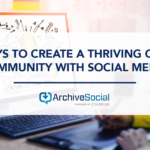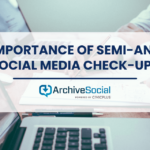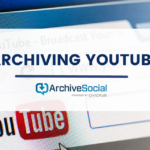Our recent webinar, Intro to Web Accessibility for Government Communicators, started the conversation of what web accessibility is and why it’s important. You can watch the recorded webinar here and read a detailed recap here.
But there’s a lot that goes into determining how to best incorporate accessibility into your websites and everyday work. Website accessibility is an ongoing process rather than a single task. Because websites grow and change over time, accessibility is a mindset we have to have every time we edit a page or add a feature. Here are some pro tips on how to think accessible from ArchiveSocial’s digital accessibility and compliance expert, Marcus Smith.
Think before you update
One of the most important concepts introduced in the webinar was the standards of accessible design, POUR. POUR stands for Perceivable, Operable, Understandable, and Robust. The final pillar, Robust, is arguably the most complicated. Robust design means design that is capable of adapting itself to the needs of potential users, current and future.
So how can you predict the future? You can’t. But you can create a website that works with assistive technology, is mobile-friendly, and gives everyone a chance to interact successfully with your content. “Keeping your website robust is really about thinking about how additions or changes you make to your website may affect different users’ experiences,” Smith said. These tips can help you avoid some common accessibility problems.
Accessibility is not limited to users with disabilities
When building or updating a website, communicators and web developers need to be aware of certain barriers to access that users with disabilities may have and to build with those in mind. “But these aren’t the only barriers to access to consider,” Smith pointed out. “Limited internet accessibility because of location or device type can also make engaging with web content difficult.”
In the US, adults with lower household income levels are less likely to own a desktop computer and more likely to rely on a smartphone to connect to the internet. This makes it important that government communicators ensure their website is mobile-friendly in order to reach more citizens.
Location can also be a barrier. “Americans living in more rural areas have lower levels of connectivity and may experience slower internet speeds. Long page load times can also be a barrier to accessing public information or services,” Smith said. If your website has large image files or your content management system (CMS), like WordPress or Drupal, is out of date, that could result in long load times for visitors. To avoid these issues, learn how to optimize images for the web here and make sure any plug-ins or themes you use in your CMS are current.
Be careful adding new dynamic content to your website
We all love dynamic, interactive content online. Websites often add this content by incorporating widgets into their pages. Widgets are embedded applications, like chatbots or interactive maps, usually from third-party developers or companies. Widgets can make websites unique and keep visitors engaged – but, Smith warns, they can also cause accessibility issues.
Not all widgets work well with the assistive technology that persons with disabilities may use to navigate websites. Individuals using keyboard shortcuts or tools other than a mouse to move through content online may get stuck in a widget that isn’t accessible. Getting stuck on one item means they’re unable to reach and engage with other content on your page. You can avoid this by making sure third-party widgets meet accessibility standards before adding them to your website.
To find out more about accessible third-party widgets, check out the World Wide Web Consortium (W3C). W3C is an international community that develops open standards to ensure the long-term growth of the Web. Their Website Accessibility Initiative (WAI) specifically works on standards and support materials to help developers and website owners understand and implement accessibility.
World Wide Web Consortium
The World Wide Web Consortium (W3C) is an international community that develops open standards to ensure the long-term growth of the Web. W3C has developed a helpful set of standards for accessibility in their Website Content Accessibility Guidelines (WCAG). Their purpose in doing so is to provide “a single shared standard for web content accessibility that meets the needs of individuals, organizations, and governments internationally.”
One such set of standards is the Accessible Rich Internet Applications suite, or WAI-ARIA. WAI-ARIA is a set of specifications that ensures dynamic content and widgets are accessible and usable to people with disabilities. Before you incorporate any new third-party content or widget to your website, Smith recommends ensuring your website meets these standards first.
Test processes before going live
Citizens are often happy to see government processes moved from in person or by mail to online. And local governments tend to see increased engagement from new online processes, like reserving a picnic area at a local park or applying for a pet license. It’s also a great way to improve access for people with mobility issues.
But to be sure new processes will be successful, it’s good practice to test them out yourself before promoting them to citizens. Smith identified some of the questions you can ask yourself when testing these processes. “Are the links clearly worded so that someone using a screen reader would know where to go next? Are all page colors and text at an appropriate contrast level for users with visual impairments?” He continued, “Are forms or third-party applications mobile-friendly and loading easily? These are good questions to ask.” For even more considerations, check out our Accessibility Checklist and Monsido’s Accessibility Handbook.
While there are questions you can ask and items you can proactively test when designing new processes, it’s important to remember that some things may still fall through the cracks. That’s why it’s helpful to consult accessibility experts on what improvements you can make to your website. And to make it easy, Monsido offers a scan of your entire website for free. Get a free accessibility scan of your website from Monsido here.
Make the most of readily available accessibility features
Many of the sites and services you’re already using to communicate offer some accessibility features. “Get an idea of what already exists that you can leverage,” Smith said. Social media platforms can often add subtitles to videos you’re posting on their sites. You can also add alt text to images you share. Read our tips for making your social media presence more accessible here.
Most CMS providers give you opportunities to incorporate accessibility features into your website, like adding descriptive alt text to images you feature. You can access these by choosing a theme that is already accessibility-ready or by adding accessibility plug-ins.
”These tools can be a great learning resource,” Smith noted. “The more users engage with these features, the more attention they’ll get from developers to continuously enhance them. They’ll become better from more participation.”
Practice makes better
The primary goal of increased accessibility for your agency or school district is to better and more equitably deliver your services to the public. But increased accessibility also helps bring more diverse voices to public discourse. And in that way, Smith points out, “More accessible government helps create more accessible government.”
Websites can play a big role in this, because they’re often the first place a citizen turns for information. If access barriers prevent persons with disabilities from accessing information about government or other public services, then they’re not being invited to participate. If they can’t participate, they can’t use their perspective to help keep improving accessibility. It’s important to have these perspectives represented so that public services can learn and grow.

